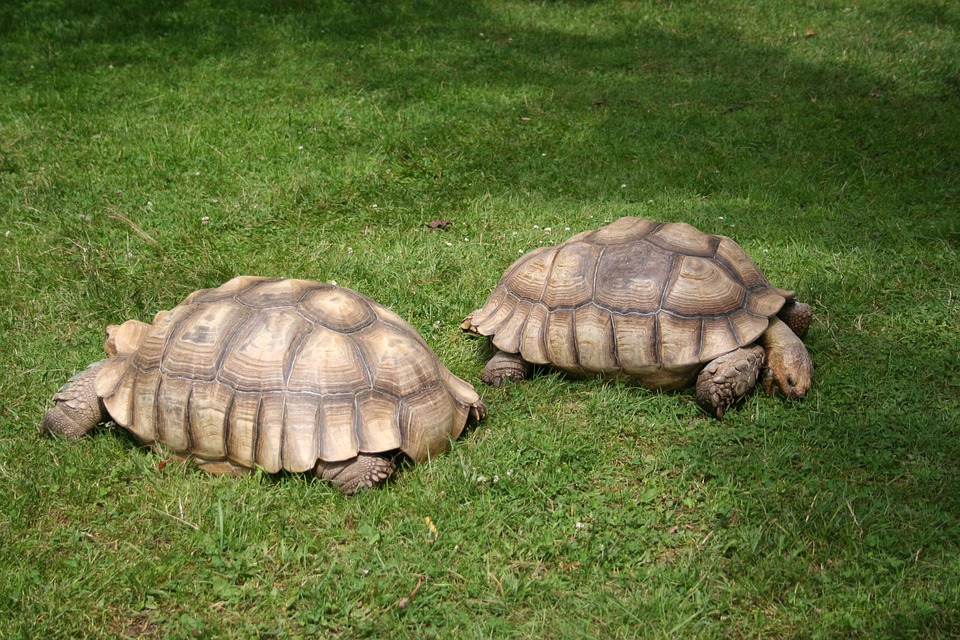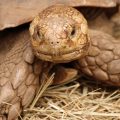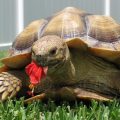Table of Contents
How to feed a baby tortoise? Feeding your tortoise is not that hard, in fact, you won’t have to worry about it at all. If you happen to have a backyard outside or some plants, your sulcata can live a happy life! But since you took on the responsibility of becoming a reputable keeper or breeder, it’s probably best that you live up to that by providing them with a healthy nutrition. How to feed a baby tortoise? Fresh produce, hay, commercial pellets and occasional fruity treats as well as their natural food in the wild like grass, flowers and weeds can all contribute in the longevity and health of your pet. How to feed a baby tortoise? The key to a tortoise’s long life is proper diet. The diet of tortoises in general should be high in fiber and calcium yet low in protein and fruit; the kind of food a keeper should feed depends on the type of tortoise. In this case, sulcata tortoises should be fed with hay since it is high in fiber and highly recommended for grassland tortoises like the African sulcatas and other species that originated from arid landscapes.
First Things First!
How to feed a baby tortoise? The first thing a baby tortoise need is water. It doesn’t matter if a tortoise is from a desert or a jungle; you have to make sure that you provide with clean water for your young sulcata tortoises.
It’s highly recommended that you purchase shallow water bowls because if you buy water dishes that are deep or big enough for their size, they can accidentally flip over and if you don’t notice them they can definitely die since they’re not aquatic species like turtles.
Don’t fill up the water bowl too deep, just place an amount where they can easily put their heads under to drink and a dish that they can get out of if in case they flip on their backs to avoid drowning.
Type of Food Dishes
How to feed a baby tortoise? You can buy different kinds of food dish that comes in many sizes and colors from pet stores or you can save money by purchasing a flower pot dish made out of clay. You can easily get it at hardware stores or local home centers for a very cheap price. You have to keep in mind that, just like the water dish, the food dish/bowl is also shallow where your baby tortoise can conveniently access.
The advantage of using a clay or rough type of food dish is that it could develop your tortoise beak or mouth because as it eats in the dish, it can naturally scratch off its excess beak.
If you use plastic or stainless food dishes, it can cause problems because they are not being fed on something hard which can cause problems since their beak will become too long or overgrown.
If this happens you might need to use some trimming device to cut off the excess beak which can be quite an unpleasant experience for your baby sulcatas.
Types of Hay You Can Feed
How to feed a baby tortoise? There are basically two types of hay; timothy hay and alfafa hay. Alfafa hay contains high levels of fiber and calcium but it also contain higher levels of protein than timothy hay, so make sure that you don’t overfeed your pet sulcata with too much alfafa hay.
Hay can be purchased per bag and are often found in pet shops, groceries and through online retailers. If you don’t see hay in the reptile section, you can find stocks in probably the rabbit or guinea pig sections.
Other foods for grassland tortoises include grass, flowers, and weeds. Keep in mind that in the wild, tortoises graze on the ground which is why grass should also be available.
If you don’t have plenty of grass around your backyard, you can easily purchase grass seeds so that you can grow your own grass so that your pet sulcata can graze happily outside. If you keep your pet in an outdoor pen, what you can do is plant edible grasses and other plants so that they can have plenty of options.
Veggies and Everything in Between
How to feed a baby tortoise? Plants like collard greens, mustard greens and dandelion greens are all nutritious and packed with high levels of calcium. You can easily purchase collard and mustard greens in grocery stores, dandelion greens on the other hand can be a bit hard to find but you can always have the option to grow your own.
Sulcata tortoises love to eat Dandelion flowers as well as Hibiscus, Rose petals and carnation. You can offer them other types of flowers but make sure that they are non – toxic and are not sprayed with fertilizers or pesticides.
It could be tempting to buy lots of fresh veggies in supermarkets but you need to keep in mind that these veggies may not be good choices because greens like spinach because it can block the tortoise’s ability to absorb calcium.
Fresh Fruits
Some vegetables like peas and green beans contain high levels of protein, Iceberg lettuces should also be avoided because it can cause diarrhea to tortoises since it has high water content.
Fruit can be offered as a treat but make sure that you don’t overfeed your pet with it or offer fruits that have high water content. Fruits like strawberries, blueberries, raspberry, cantelope, apple, papaya and mango are good fruits to feed as long as you offer it to them in limited amounts.
Fresh vs. Commercial Foods
How to feed a baby tortoise? Before you offer fresh foods to your sulcatas, it’s highly recommended that you sprinkled it with a small amount of calcium supplement preferably with Vitamin D3 and without any phosphorous content for each serving.
Commercial pellets can also be rotated as part of your pet’s diet. You can purchase them through pet stores or online. Just make sure that before you buy one, you check out the list of ingredients contain in each pack. Plan your pet’s nutrition accordingly and look forward to spending a long term relationship with your tortoise.






 Author and long-time animal lover. Sharing knowledge on pet care through experience and the written word.
Author and long-time animal lover. Sharing knowledge on pet care through experience and the written word.